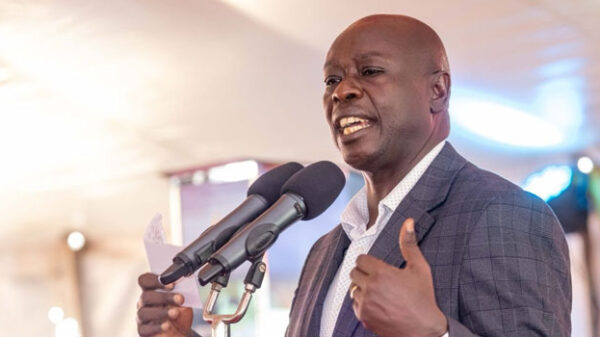In early August, scientists from the Intergovernmental Panel on Climate Change (IPCC) released a report indicating that the world is already sure to face further climate disruptions for decades, if not centuries, to come. During the report’s launch, United Nations Secretary-General António Guterres described the report as a “code red for humanity” signaling the need for rapid action on climate change and a strategic approach.
Guterres’ sentiments were perhaps the latest rallying call to spur the world into more aggressive action against climate change. According to United Nations Energy and Climate Intelligence Unit, more than 130 countries have committed so far to keep global warming to no more than 1.5 °C in order to avoid the worst effects of climate change, as envisioned in the Paris Climate Change Agreement which came into force in November 2016.
The quest to stem the tide of global warming however begun in earnest in 1992 with the establishment of the United Nations Framework Convention on Climate Change (UNFCCC) at the Rio de Janeiro Earth Summit. The ultimate objective of the UNFCCC, which Kenya is a party to, was to achieve stabilization of greenhouse gas concentrations in the atmosphere to avoid their harmful effects on the environment.
In order to rally the world further in the cause to reduce greenhouse gas emission into the atmosphere, in 1994, the United Nations General Assembly proclaimed 16 September the International Day for the Preservation of the Ozone Layer, commemorating the date of the signing, in 1987, of the Montreal Protocol on Substances that Deplete the Ozone Layer.
Thereafter, against the backdrop of a growing pool of evidence of human influence on climate change and the irreversible nature of its impacts, the international community adopted the Kyoto Protocol of 1997.
The Kyoto Protocol was a significant milestone as it was the first international agreement in which developed nations signed up to quantified, compulsory reductions in greenhouse gas emissions, a clear signal that the world had finally reckoned with the growing dangers of climate change.
One of the significant aspects of the Kyoto Protocol is the establishment of the Clean Development Mechanism (CDM) – a flexible mechanism that allowed industrialized countries with emission-reduction targets to partly meet their commitments by buying Certified Emission Reductions (CERs), one tonne of CO2 equivalent (CO2e) each, from projects that reduced or avoided emissions in developing countries. The CDM was designed to meet a dual objective to help developed countries to fulfill their commitments to reduce emissions while assisting developing countries in achieving sustainable development.
The establishment of the CDM unlocked a whole new channel for provision of crucial funding for sustainable development to countries and communities in non-industrialized countries.
It is worth noting that as at 2018, the incentive provided by the CDM had led to the registration of more than 8,100 climate action projects and programmes in 111 countries, the reduction or avoidance of 2 billion tonnes of CO2 and sparked investment of close to KSh. 33.4 trillion ($ 304 billion) in climate and sustainable development projects since 2001.
The Kenya Electricity Generating Company PLC (KenGen) has been a beneficiary of the CDM initiative, having commenced the development of green energy projects under CDM in 2006 when the Company entered into a partnership with the World Bank. KenGen has so far developed six CDM projects that include Olkaria II Geothermal Expansion Project, the redevelopment of Tana Hydro Power Station, the optimization of Kiambere Hydro Power Station, Olkaria IV Geothermal Project, Olkaria 1 Units 4&5 Geothermal Project and the Ngong wind power project.
Eighteen months down the line, KenGen has now been cleared by the UNFCCC to sell an equivalent of 4.6 million tonnes of carbon emissions earned from the six projects. The first KenGen project to be issued with carbon credits under the CDM initiative was the Tana Hydroelectric power project which received 57,458 carbon credits on 13th March 2020. In August 2021, the UNFCCC issued 2,025,813 tonnes of Carbon Emission Reductions (CO2e) to KenGen’s 150MW Olkaria IV Geothermal Project, which was the last of the six projects which KenGen applied for verification through the UNFCCC.
This came hot on the heels of the issuance of 2,040,515 tonnes of CO2e to KenGen’s Olkaria I, Units 4 and 5 Geothermal Power plant by the UNFCCC.
More recently, KenGen was recognized for leading the Eastern Africa region in clean energy production during the 2021 Climate Action Awards East Africa. This is a competition that shines a spotlight on people and organizations with groundbreaking innovations and ideas to mitigate the effects of climate change. The regional awards, which are courtesy of the IGAD Climate Prediction and Applications Centre (ICPAC), seek to showcase successful solutions that can accelerate the transition to low carbon economies in the Eastern African region.
Going forward, as a way of enhancing our portfolio of climate change mitigation projects, KenGen intends to incorporate additional geothermal, wind and solar projects which will further reduce carbon emissions annually, in the process reducing the impact of climate change on the environment and enable Kenya to meet the Nationally Determined Contributions (NDC) climate goals by 2030 with milestone targets in 2025.
It is clear from KenGen’s experience so far that CDM can be a significant contributor to national sustainable development objectives through increased technology transfer, increased financial resources, sustainable energy production, increased energy efficiency, positive health impacts, increased productivity and poverty alleviation through income and employment generation. As the world heads to Glasgow, Scotland for the forthcoming 26th UN Climate Change Conference of the Parties (COP26) that will be held from 31st October to 12th November, 2021 I urge all corporates, governments and multinationals to help reverse the trends in climate change by considering initiatives that will help reduce carbon emissions and ensure sustainable development for the current and future generations.
The author is the Managing Director and CEO of KenGen PLC
Email mdceo@kengen.co.ke
Twitter : @rebecca_miano

























































